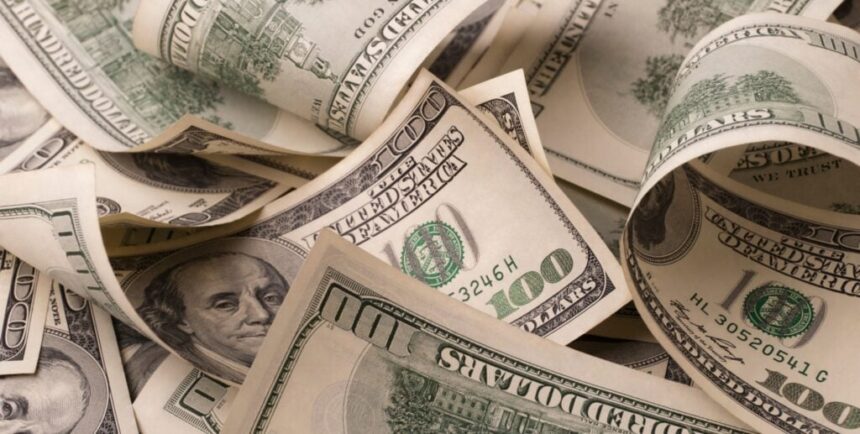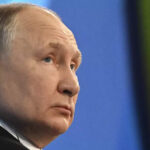It’s certainly the topic of the day, and you’re going to be hearing more about it between now and November 2024. Before the COVID-19 pandemic, it wasn’t really something that the average consumer paid much attention to. Since COVID, the masses of overnight experts have been out raising alarm bells over inflation, usually decrying “the death of the dollar,” the “depletion of our purchasing power,” and the “Zimbabwefication of our currency.”
And they seem kind of right. Prices are measured in a few different ways in the U.S. The popular metric CPI-U (Consumer Price Index—All Urban Consumers) was as low as 256 in May 2020 and printed out at 306 for the month of August 2023. This works out to an average 5.6% compounding annual growth rate.
That’s well in excess of the broadly acknowledged target inflation rate of 2%. Americans certainly feel it—groceries, gas, and housing are all more expensive. And it seems like everything else you buy has a 25% “suggested” tip attached to it.
So what’s the explanation? The inflation hawks would point to the growth in the Federal Reserve balance sheet assets, a reflection of the amount of money available in the economy. It’s an admittedly staggering increase from about $4.1 trillion before the crisis to a peak of just under $9 trillion in spring 2022.
Most of this growth occurred in the first few months of the COVID crisis. The Federal Reserve, under the leadership of Jerome Powell, pulled out all the stops and flooded the banking system with reserves. This was done for the sake of instilling both consumer and business confidence in the economy and also making sure there would be ample liquidity available for banks to weather the storm.
The argument from the detractors was that all the excess liquidity would eventually express itself in the form of increases in consumer prices. It’s generally agreed that it takes nine to 18 months for monetary policy effects to be meaningfully felt throughout the economy. This all seems to fit. The quantitative easing took place in spring 2020, and prices started really ramping upward around spring 2021.
So what’s the issue? It all seems pretty settled.
Well, the problem is that our understanding of money and banking is from the “old” monetary regime. We’re in a new one, and it’s not as simple as we think. Consider these four factors:
Required Reserves
The American banking system is what’s called a fractional reserve system. When a bank receives a deposit, it holds a percentage of that money as a required reserve and is free to lend out the remainder of it.
The Federal Reserve sets the reserve requirement ratio. Historically, this has been 10%. So, if a bank receives a deposit of $1 million, it must hold on to $100,000, and it is then free to originate a loan using the remaining $900,000. Whoever receives that money will presumably deposit it into their bank, and then that bank is free to do the same thing, but this time with $810,000, and so on. This is called the money multiplication effect.
The math states that the volume of final money is the amount of starting deposits divided by the reserve requirement ratio. So, in our example, that’s $1 million divided by 10% for a total of $10 million.
Now, consider that, in March 2020, the required reserve ratio was lowered from 10% to 0%. Try seeing what your calculator says about that. The suggestion is that money is infinite. But we know that isn’t the case.
Quantitative Easing
The entire process of quantitative easing is misunderstood by most people. The common accusation is that the Federal Reserve is “creating money out of thin air” and that this money magically appears somewhere in the economy.
This is simply not what happens. The Federal Reserve does not pick winners so heavy-handedly. Instead, when the Fed uses quantitative easing (otherwise known as large-scale asset purchases) to add money to the economy, it does so by purchasing assets on a large scale. These assets are usually U.S. Treasury bills. Many of the people who bemoan quantitative easing don’t realize there is a market exchange of assets for the money that the Federal Reserve is “injecting” into the economy.
Refusal to Lend
When the Federal Reserve engages in quantitative easing, it increases the amount of reserves that banks have available. The idea is that banks will lend out these new reserves in the manner described, effectively multiplying it according to the formula.
The conventional understanding of inflation is that if the Federal Reserve gives the banks the reserves, the banks lend the money out, and then the money is used in productive enterprise, which pays employees and, therefore, has a positive effect on wages. This means the consumer has more money, which means that the prices of things they buy will increase.
But what if banks don’t find good opportunities for loans? Does the money supply increase, then? Do prices increase, then? Effectively, no.
Imagine you are a bank, and the Federal Reserve buys $1 million in Treasury bills from you. Now, you have $1 million in new reserves. But then suppose, instead of lending out those reserves, you just keep them in the form of cash locked up in your vault.
According to conventional understanding, under this scenario, the money supply has increased. In reality, the monetary impact is nonexistent.
And indeed, banks are refusing to lend. So, if banks refuse to advance reserves into the economy in the form of new loans, then how can the Federal Reserve be responsible for price increases? The simple answer is that it’s not.
A Real Look at Prices
If you’re still unconvinced that inflation works differently from the way it’s typically believed to, take a look at the CPI-U historically compared to the monetary base. The correlation for these variables is pretty weak.
We have a pre-2008 history of low, stable monetary growth with a firm increase in prices. Then, from March 2008 to today, the monetary base has had plenty of movement to it, including an overall greater than 550% increase. In the same period, the CPI-U increased from 213 to 306—not even 50%.
If money printing is effective and inflationary, then why are we, 15 years later, looking at measurements that are telling a completely different story? And we are still parading around the conventional understanding of monetary policy.
The Bottom Line
The old adage rings true in this case: “If the facts don’t fit the theory, change the theory.” Or, as I’d put it: “Update the theory.”
Throughout modern history, we’ve been in a banking regime aligned for growth. All of our understanding of money has been within a certain context. But since 2008, we’ve been in a different set of monetary circumstances—one that hasn’t been fully understood or accounted for. In fact, it’s not inaccurate to describe it as broken. And it’s got nothing to do with money printing or geopolitics or oil.
Ready to succeed in real estate investing? Create a free BiggerPockets account to learn about investment strategies; ask questions and get answers from our community of +2 million members; connect with investor-friendly agents; and so much more.
Note By BiggerPockets: These are opinions written by the author and do not necessarily represent the opinions of BiggerPockets.









